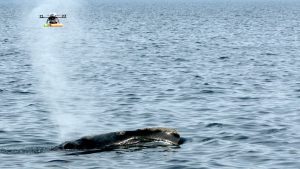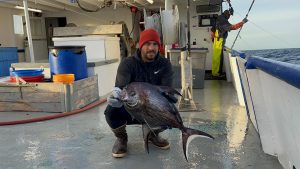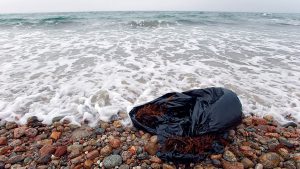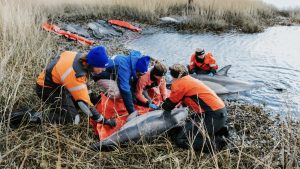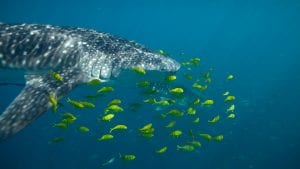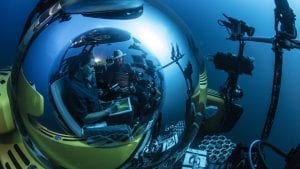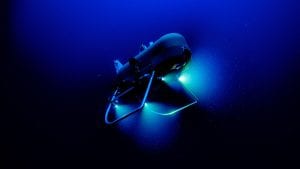Research Highlights
Oceanus Magazine
News Releases
A first of its kind study links drone-collected respiratory microbes with health assessments, offering hope for protecting vulnerable populations
WHOI scientists delve into the elusive fish’s role in the food web
While the impacts of plastic pollution on human health and the environment are growing, the report finds, increasing harm due to plastics is not inevitable.
Filter-feeding whales sample the Arctic food web, tracking decades of change
Differences in brain structure between echolocating and non-echolocating marine mammals offers insight into auditory processing
News & Insights
Paul Caiger is a fish biologist, marine photographer and postdoctoral investigator at Woods Hole Oceanographic Institution (WHOI). From the ghoulish grimace of the viperfish, to the bejeweled beauty of the strawberry squid, Caiger’s marine portraits have helped shine a light in this dark but critical ocean zone.
A new study of whale shark movements near a known hotspot in the Red Sea sheds light on their behaviors and could help inform the conservation efforts of the largest known fish, which can reach lengths of 40 feet or more.






